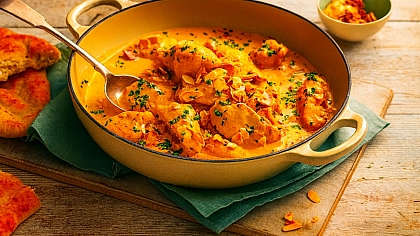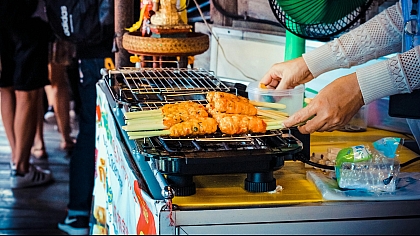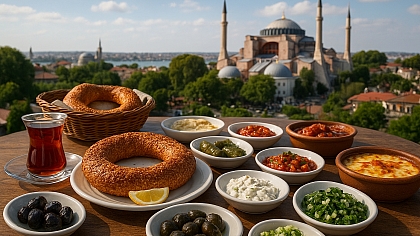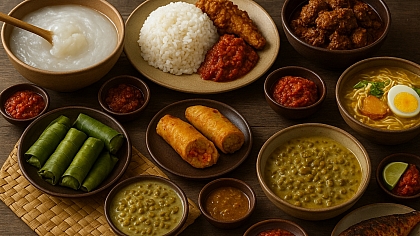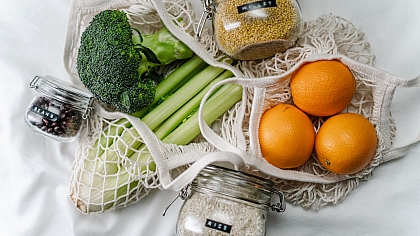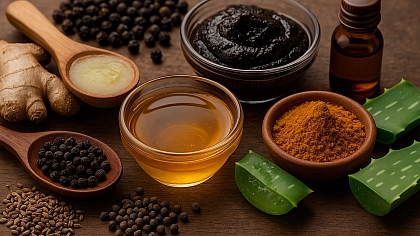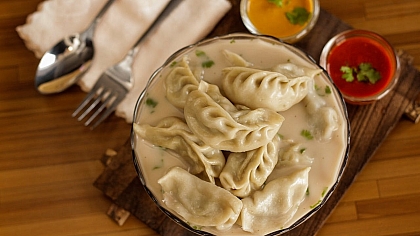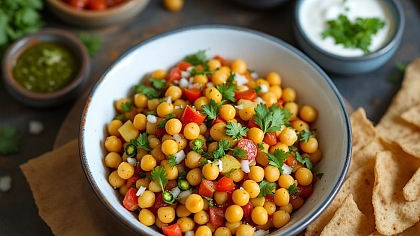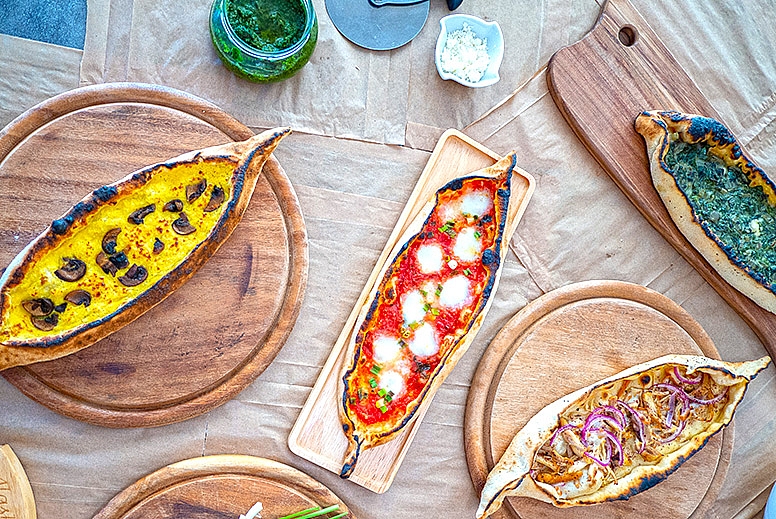
Top 12 Vegetarian Turkish Foods You Must Try on a Visit to Türkiye
Although Turkey (officially known as the Republic of Türkiye) is known for its amazing meat dishes, as a vegetarian or someone who enjoys a meatless diet, you really don't have to miss out on mouthwatering Turkish cuisine. Here are some of the best meat-free options when it comes to Turkish food:
Çiğ Köfte
Çiğ köfte was traditionally made with raw meat, which gives it its name with çiğ meaning 'raw' and köfte meaning 'meatball'. However, nowadays this delightfully tasty köfte dish is made with bulgur and ceviz (walnuts) and is purely vegetarian.
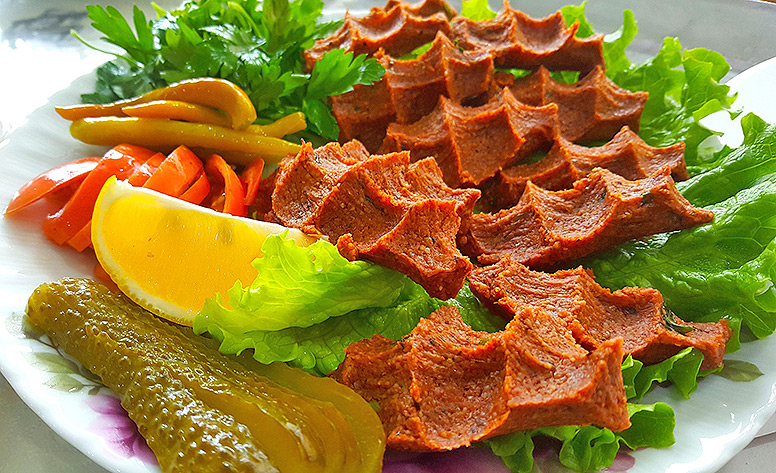
Çiğ köfte is a spicy, inexpensive and healthy meal option for when you are in Turkey, and they are sometimes even served as a complimentary appetizer along with other mezes and salads, which are all part and parcel of the famous Turkish hospitality. Wrapped in bread or eaten with rice or salad, çiğ köfte makes a filling veggie-friendly meal.
Kuru Fasulye
Kuru fasulye are dried beans that have been cooked and are a popular dish typically found in a Turkish lokanta, which is basically a canteen-style restaurant that serves affordably priced food.
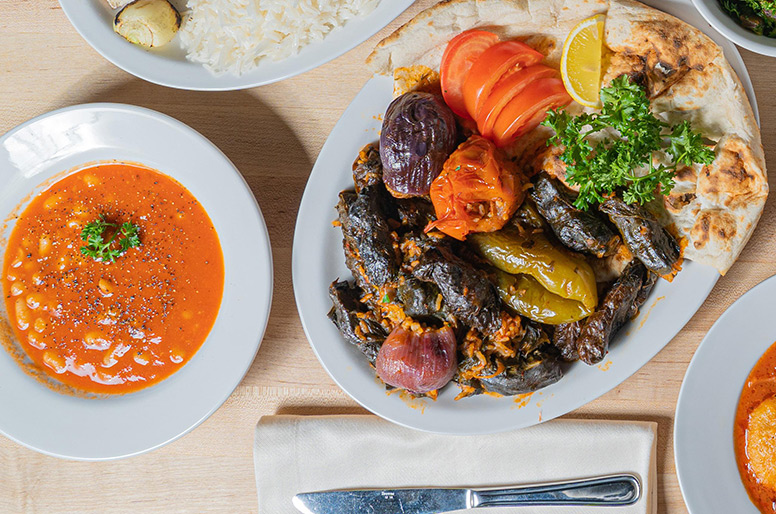
This delicious white bean stew is made with an onion and tomato-based sauce, making it a wholesome and hearty meal when served on a bed of hot rice or scooped up with some yummy Turkish bread.
İmam Bayıldı
İmam Bayıldı literally means “the Imam fainted,” but it can also mean that the Imam absolutely loved this dish — and who can blame him for loving this fantastic flavour combination of baked aubergine stuffed with sarımsak (garlic), onion, and tomato mixture?
As with many of the culinary treats you will find in Turkey, İmam Bayıldı is a dish that is present in both Turkish and Greek cuisine, with its background dating back to the Ottoman Empire when the Turks and Greeks lived together. In Turkey, the meat version of İmam Bayıldı is called Karnıyarık.
Şakşuka and Menemen - What is the Difference?
Turkish şakşuka is made with eggs and fried vegetables, often including aubergine (eggplant), with tomato sauce. This dish is normally enjoyed at room temperature rather than hot and is a popular summertime dish.
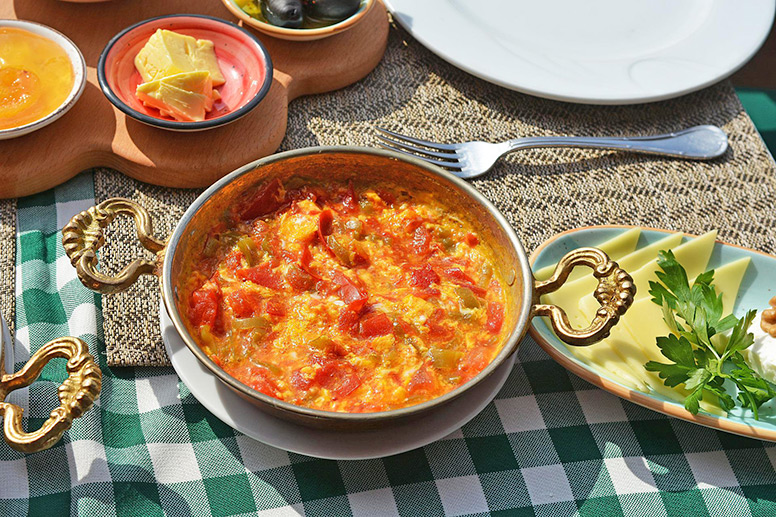
A legacy of the Ottoman Empire, şakşuka is a highly popular dish eaten throughout the Middle East in countries such as Tunisia and Libya. It is similar to the slightly spicier Turkish menemen, and even the Italians have their version of it, known as 'Eggs in Purgatory' - Uova in Purgatorio.
Even though both dishes use similar ingredients, the difference between şakşuka and menemen is that with şakşuka, the eggs are added near the end of the cooking time and left in one piece. In contrast, with menemen the eggs are mixed into the sauce so they become scrambled. Menemen is often eaten as part of a traditional Turkish breakfast, known as kahvaltı.
Baba Ghanoush
Baba Ghanoush is a cold meze made with aubergine, lemon juice, olive oil, and tahin (tahini). The aubergine is traditionally cooked by baking over a flame to char the skin, which is then peeled off to reveal the smokey-flavoured pulp.
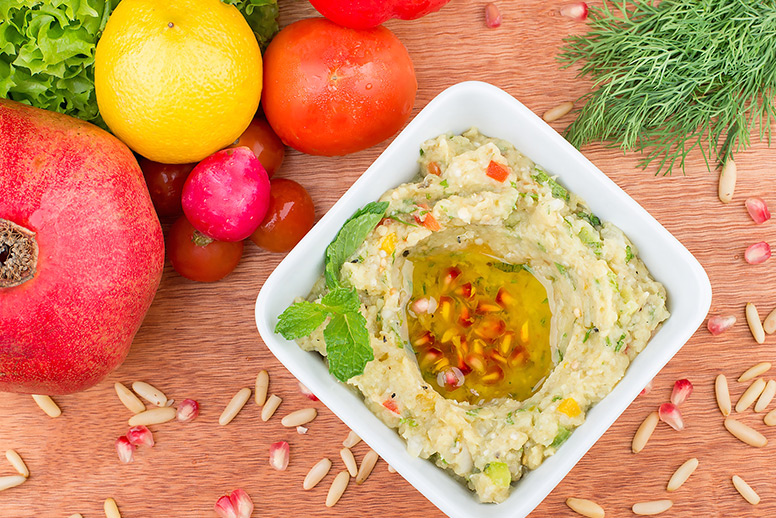
As you can tell by now, aubergines are prevalent in Turkish cuisine. They were the most beloved vegetable throughout the reign of the Ottoman Empire, and they are a common component of many Turkish dishes. The second best-loved vegetable on the list would have to be the kabak (courgette/zucchini).
Lentil Soup Mercimek Çorbası
Çorba, the Turkish word for soup, is a very popular part of Turkish food culture and comes in both vegetarian and non-vegetarian varieties. If you love lentils, then you will enjoy Mercimek Çorbası and Ezo Gelin Çorbası. Both are made with red lentils, but Ezo Gelin Çorbası is more filling as it also contains additional ingredients such as pirinç (rice) and bulgur.
Interesting fact: Ezo Gelin literally translates to 'Ezo bride', historically referring to the nickname which was attributed to a beautiful bride named Zöhre from Gaziantep.
Cheese Pide (Peynirli Pide)
Somewhat the Turkish equivalent of pizza, pide is deliciously crispy, oval-shaped flatbreads with various toppings that are baked in a clay oven. Cheese pide is the most obvious vegetarian option, and it is a highly popular snack you must try on a trip to Turkey.
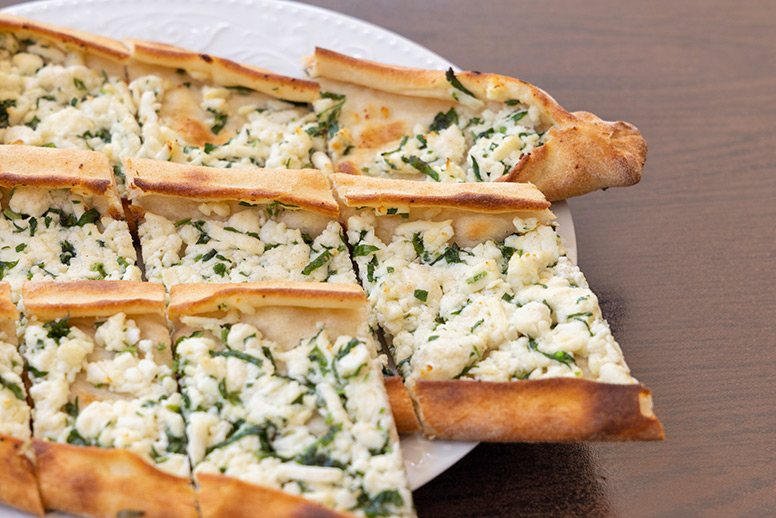
Pide originated from the Black Sea Coast of Turkey, but it is now a popular street food that can be found across the country. Pide is normally an oblong boat shape, but you can find round pide in Trabzon. Also, if you have the opportunity to be in Türkiye in the month of Ramadhan, you must try Ramazan pidesi, which is a soft, round bread available at that time of the year only.
Stuffed Vine Leaves Zeytinyağlı Yaprak Sarma
Zeytinyağlı Yaprak Sarma, or Zeytinyağlı Dolma, are stuffed vine leaves with a delicious filling of pirinç, herbs, and olive oil. They are eaten cold and are a vegetarian alternative to the stuffed vine leaves that are made with meat and eaten hot, known as etli yaprak sarma.
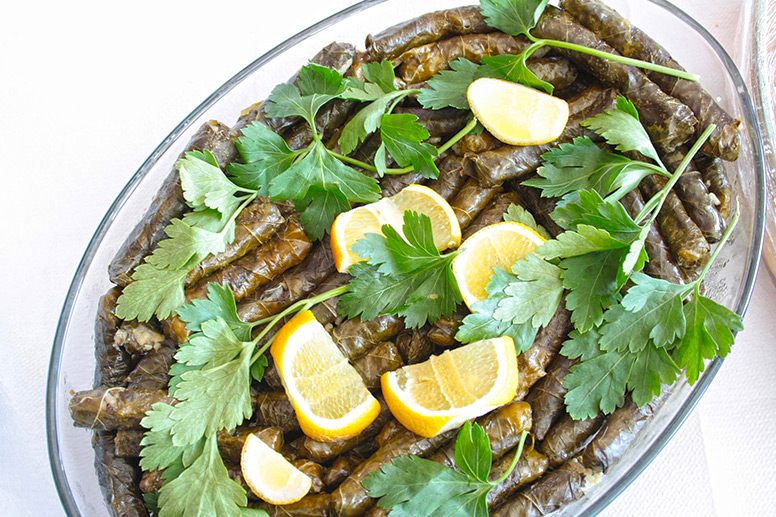
The Mediterranean flavours of lemon juice, nane (dried mint), sumak, and tomato paste really give the dolma that mouth-watering taste you would expect from Turkish cuisine.
Rice with Chickpeas Nohutlu Pilav
A simple meal and popular street food that is more of a side dish, nohutlu pilav — chickpeas with white rice — is the perfect accompaniment for main dishes such as İmam Bayıldı and stews like kuru fasulye.
Be aware that sometimes this chickpea pilaf is served with chicken, making it tavuklu nohutlu pilav, and the rice itself may have had chicken stock added during the cooking process. So if you want to be sure that you are getting a 100% vegetarian dish, then it's a good idea to check with the vendor that the dish is tavuksuz, meaning without chicken.
If you want to add some flavour to your nohutlu pilav and perhaps a bit of a kick, then go for a side portion of turşu, meaning pickles.
Börek
Turkish flaky pastries known as börek come with a variety of fillings, and while some do contain minced meat, there are tasty vegetarian fillings too, such as spinach and cheese.
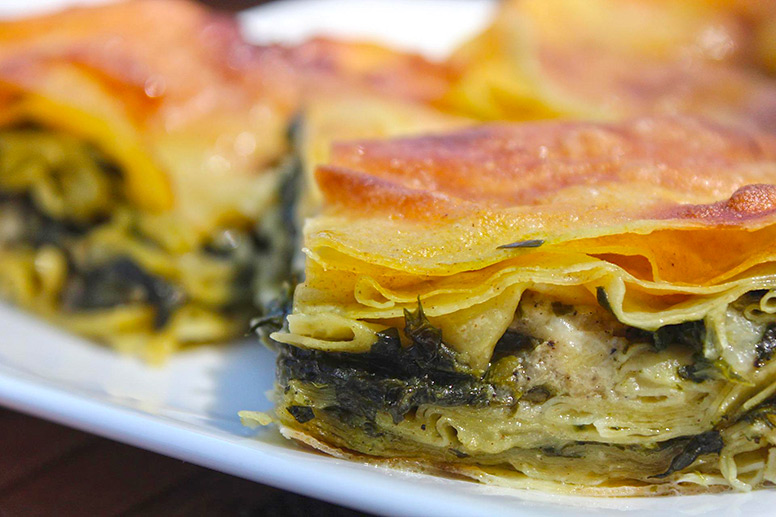
It's the layers and layers of buttery yufka pastry that make börek a treat for carb-lovers! Many of the Turkish flatbread recipes date back to pre-Ottoman times when the nomads of the Central Asian steppes used to bake their bread over a fire, rather than in an oven, which would be harder to move around all the time.
Of course, the cooking method of börek evolved throughout the Ottoman Empire, and the Greeks have their own version of it, known as Spanakopita.
Gözleme
Gözleme are savoury stuffed flatbreads that are really soft and delicious when cooked. As you would with börek and pide, you can also go for vegetarian options of gözleme fillings such as potato, spinach, and/or cheese.
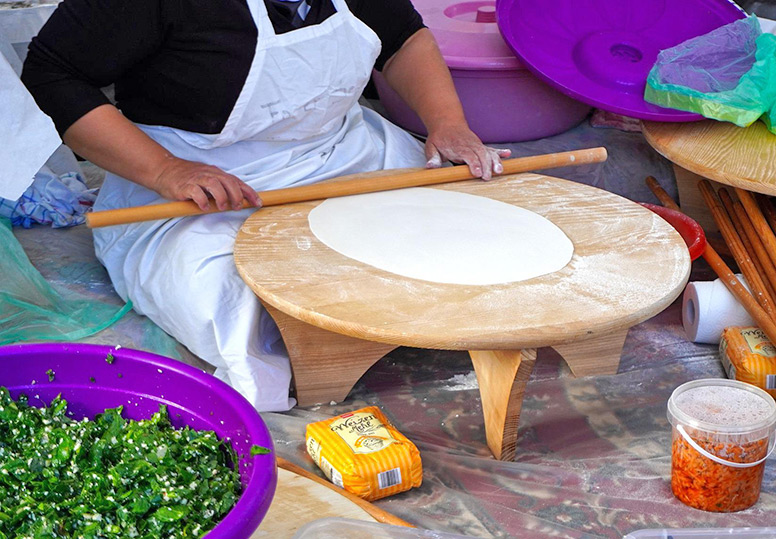
In the marketplaces in Turkey, you can usually see gözleme being hand-rolled on a wooden board by older ladies who then cook it on a large, slightly curved metal pan over a fire.
Green Beans with Olive Oil Zeytinyağlı Taze Fasulye
A stew of fresh green runner beans and olive oil that becomes a wholesome and satisfying meal when enjoyed with bread, rice, and salad. It's also eaten at room temperature as a deliciously cooling dish during the summertime in Turkey.
With only simple ingredients such as sun-ripened tomatoes, runner beans, onions and some good-quality olive oil, Zeytinyağlı Taze Fasulye is a dish that will make vegans happy too.



